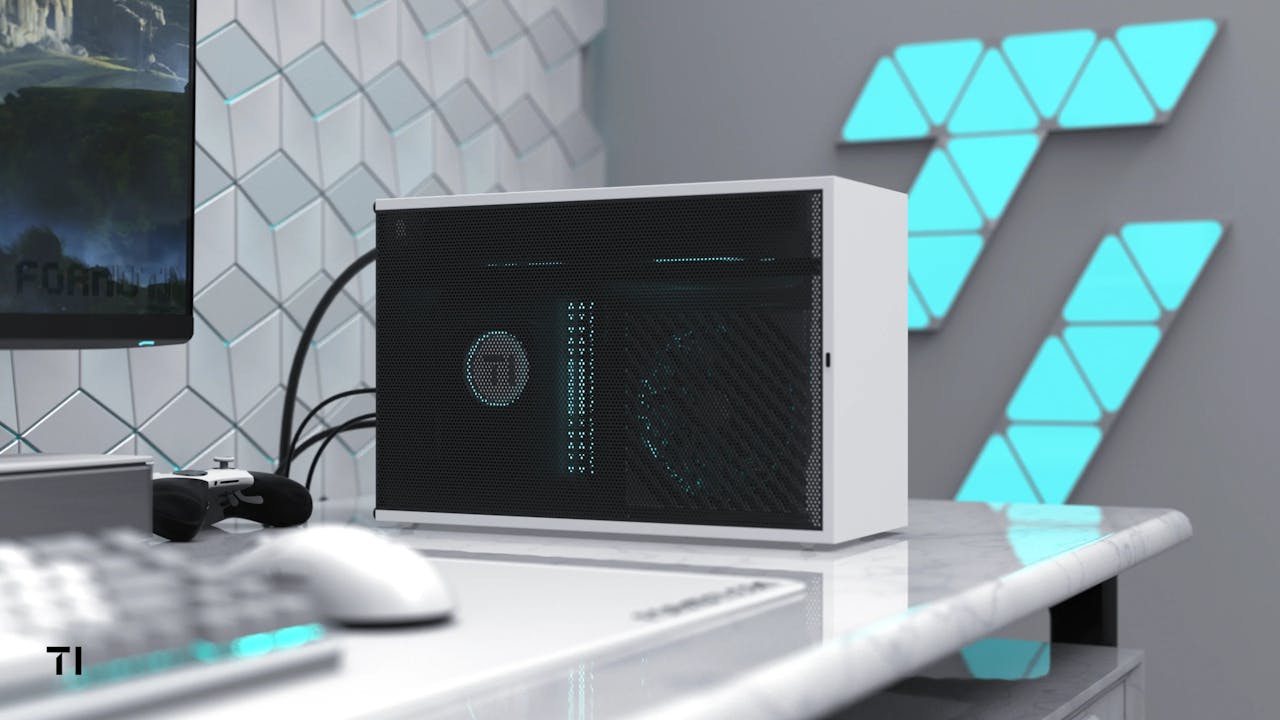Mini PCs Are The Future Of Gaming. Here’s Why.

The future of PC gaming isn't just about more power—it's about smarter design. The bulky components that once dominated our desks have either shrunk or been eliminated entirely. Today, the mini PC has matured from a niche hobby into a genuine contender, and it's poised to become the standard. The question isn't "if" you'll downsize, but "when."
Here’s a full breakdown of the trends and facts that prove mini PCs are the future of gaming.
1. The Disappearance of the Hard Drive
Our story starts with the one component that held PC design hostage: the hard drive. These bulky, mechanical boxes weren't just slow; they demanded dedicated drive bays and a tangled mess of cables. The gaming world spent years waiting on loading screens because of them.
Then came the Solid State Drive (SSD), which instantly changed everything. It eliminated moving parts, made booting up a PC feel like magic, and slashed loading times. The final evolution, the M.2 NVMe SSD, completely cut the cord—literally. This tiny, gum-stick-sized drive plugs directly into the motherboard, requiring no cables, no drive bays, and taking up virtually zero space. This single innovation freed up more internal volume than anything else, proving that PC power no longer had to come in a massive box.
2. GPUs and Power Supplies Get Smarter
While the GPU remains the largest single component, both graphics cards and power supplies have evolved to fit the SFF (Small Form Factor) ethos. SFF is an entire philosophy in PC building, focused on maximizing performance within the smallest possible footprint.
- The SFF GPU: GPU manufacturers are now releasing specialized, compact versions of their most popular cards that pack high-end performance into a dual-fan form factor.
- The SFX Power Supply: Bulky ATX power supplies are out. The SFX and SFX-L power supply form factors are purpose-built for mini PCs. They deliver all the power needed for a high-end gaming system in a fraction of the size, with fully modular cables that keep wire clutter to a minimum.
3. Unpacking the Myth: Performance vs. Full-Size Towers
This is the central debate, and it comes down to one key distinction: component class.
- Mini PCs often rely on power-efficient mobile-class components (laptop CPUs and GPUs). These parts are designed to be efficient and generate less heat, but they typically offer lower raw performance than their desktop counterparts.
- Full-size towers use desktop-class components, which have much higher power envelopes.
The Thermal Throttling Factor: The biggest performance hurdle for a mini PC is heat. With limited airflow and compact heatsinks, a mini PC is more susceptible to thermal throttling. This means during long gaming sessions, the components might get too hot, forcing them to reduce performance to cool down.
The Custom SFF Exception: A custom-built, SFF PC can utilize desktop-class components within a compact mini-ITX case, narrowing the performance gap. While this offers incredible power, it comes with trade-offs in cost and cooling complexity. A mini PC with a mobile RTX 4070 is a fantastic piece of hardware for 1080p and even some 1440p gaming, but it won’t match a desktop RTX 4070 that can exceed 100 FPS on ultra settings in demanding AAA titles.
4. The Mini Beast: How It's Done
A high-end mini PC doesn't compromise on the core components. It simply uses their most efficient and compact variants.
- The CPU: Modern CPUs are more power-efficient than ever. You can find top-tier gaming processors with lower TDPs that don't require a massive cooler to stay frosty, making them perfect for SFF builds.
- The Motherboard: The Mini-ITX form factor is no longer the stripped-down, budget option it once was. Today's boards are packed with features, including multiple M.2 slots for high-speed storage and robust power delivery.
- Cooling and Noise: In a full-size tower, cooling is often an afterthought. In a mini PC, it's a science. The compact chassis and dense component placement make airflow a critical challenge. Mini PCs use a variety of specialized cooling solutions, from low-profile air coolers to all-in-one liquid coolers. Fan noise can be noticeable during high loads, but users can mitigate it with custom fan curves, or by undervolting components to reduce heat output.
5. Upgradability and Longevity
This is a key consideration for the longevity of your investment.
- All-in-One Mini PCs offer limited upgradeability. You can usually swap out the RAM and M.2 storage, but the CPU and GPU are often fixed.
- Custom SFF builds provide more freedom. You can upgrade virtually every component—from the CPU and GPU to the RAM and storage—though it requires technical knowledge and careful planning.
- Barebones Models sit in the middle, giving you the freedom to select your CPU, memory, and storage, which provides more control and future-proofing.
The Final Verdict
So, can a mini PC be a beast? Yes. Can it beat a full-size tower? Not for every gamer, and not on raw performance alone. Full-sized towers still reign supreme for high-end, sustained 4K gaming and overclocking.
But for the modern gamer who values a compact setup, a clean workspace, and a rig that can handle both professional workloads and high-quality 1080p to 1440p gaming, the mini PC isn't just a trend. It's the most compelling and future-facing solution available.




